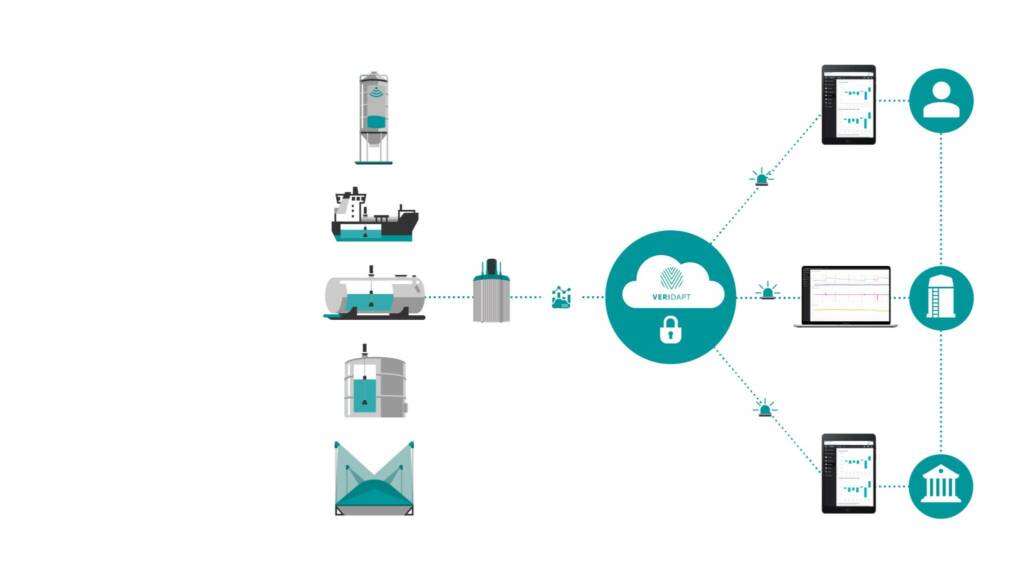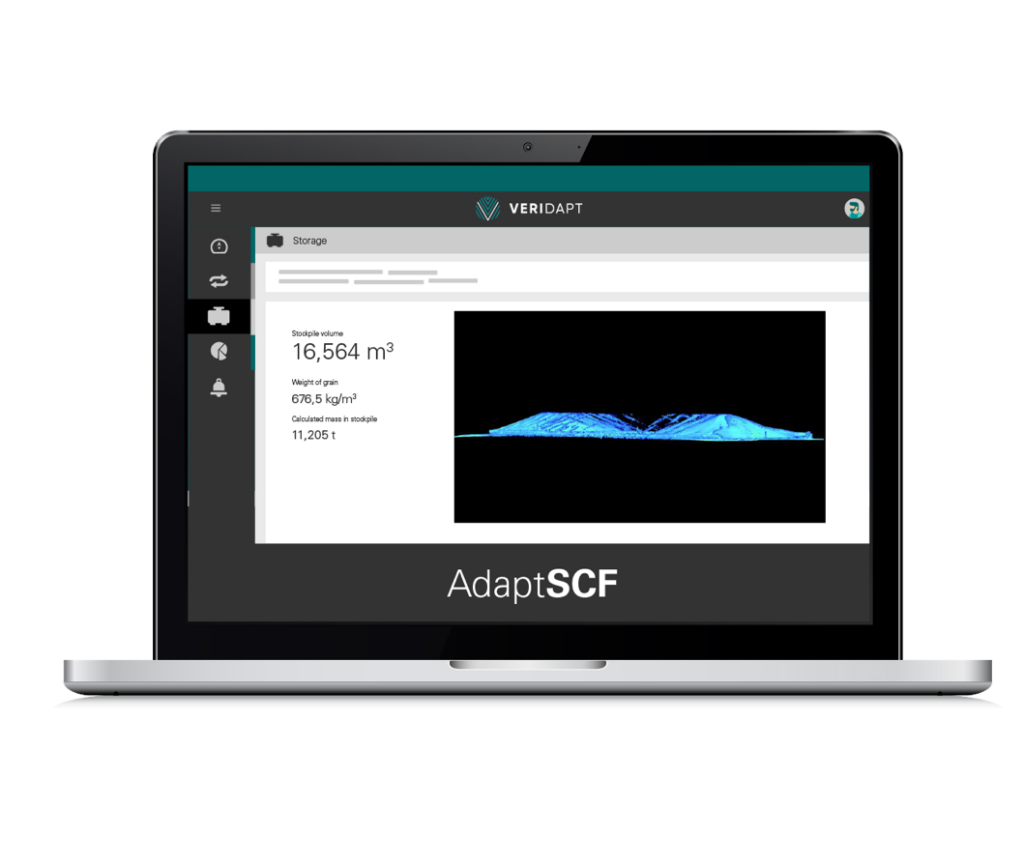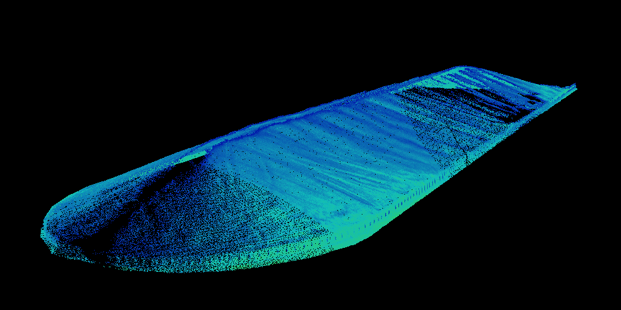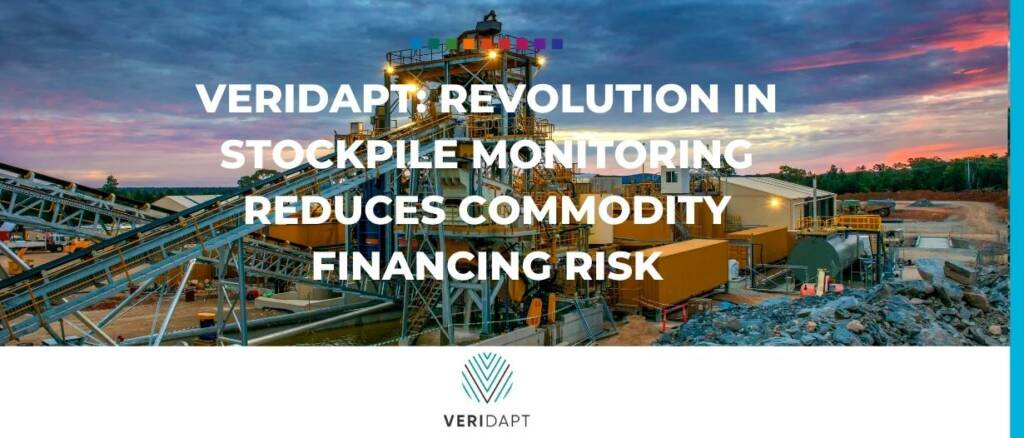Listen to this podcast on Spotify, Apple Podcasts, Podbean, Podtail, ListenNotes, TuneIn
In all the crises of the last two years – the pandemic, lockdowns, inflation, and now the Russia-Ukraine conflict – few industries have seen as much volatility as the commodities industry.
Disruptions in both supply and demand have been more or less constant, making it extremely difficult for producers and traders to plan ahead in terms of volume, pricing, and liquidity.
As a leading provider of stockpile and supply chain monitoring technology, Veridapt is among the companies best placed to help with solutions in such tough trading conditions.
Headquartered in Sydney, Australia, Veridapt is an industrial Internet of Things (IoT) business that has served the commodities markets for over 20 years.
Sean Birrell, co-founder and chief technology officer at Veridapt, manages the company’s hardware and software teams, where he can boast of never having lost a customer.
“Veridapt has developed monitoring solutions for bulk commodities and energy, and we develop everything from rugged hardware all the way to our cloud applications,” says Birrell.
“The hardware is fit for purpose in the harshest, most remote locations in the world, and our cloud applications provide anomaly detection reports for operators, financiers, traders, and inspectors around the world.”
Birrell’s colleague, Rod Hutchinson, is the regional business development manager for the Americas at Veridapt.
Hutchinson joined Veridapt in mid-2021 after a seven-year stint as head of energy and metals commodities at Dutch bank ABN AMRO, and after 17 years with the Netherlands’ Rabobank.
Veridapt’s AdaptSCF: A work of many sensors
For trade financiers, Veridapt’s flagship stockpile and supply chain monitoring solution is known as AdaptSCF.
In technical terms, Birrell says the best way to think of AdaptSCF is as a platform, deployable to any environment, that can interface to sensors and push data to provide independent visibility to players in the trade cycle.
“It’s essentially interfacing with sensors that measure the quality and quantity of various commodities, whether in inventory, through supply chains, or during transportation,” says Birrell.
“We might then even monitor those commodities through to their ultimate consumption, or any further processes they may go through.”

Birrell describes AdaptSCF as a three-layered solution, whereby primary quality and quantity data from on-site sensors are fed into a central data aggregation layer, which forms the hardware component.
The sensors required will vary depending on the product and the operation, but typically they might include level sensors, flow meters, pressure transducers, and temperature probes, as well as other bespoke sensors designed and installed by Veridapt.
“Our hardware platform is talking to all those sensors,” says Birrell. “It’s executing low-level business logic in terms of controls, and then it’s pushing that data through to our cloud application, which allows a producer to monitor a supply chain that might be critical to a process.
“All of this can provide visibility and transparency to a financier that is providing trade finance to an inventory stored in a remote location, or to a very large quantity of inventory stored on customer-owned premises, for example.”
Most importantly, AdaptSCF aims to provide real-time monitoring data at any point during the trade cycle. This is a break from older stockpile and supply chain monitoring technologies, which typically could only look at previous data.
“Ultimately, what we are trying to do is provide data and insights that might otherwise be difficult to obtain using a manual inspection method or using reports from third parties,” says Birrell.
“It can be challenging to get a full overview of a supply chain, but in today’s climate – where we face volatility, fraud, and other financial risks – it’s really important to obtain more transparent, trusted, and accurate data.”
Applying AdaptSCF in volatile markets
As the level of volatility, higher commodity prices and uncertainty in the commodities markets increases, so too does the importance of Veridapt’s all-seeing technology.
This is especially true for commodities traders and financiers, who are having to put increasingly large amounts of money at risk for the same volume of product, thanks to the impact of soaring inflation and market volatility.
“Whether it’s real-time monitoring of collateral, independent sourcing of information, or both, I think certainty and visibility have become very important, and in some cases critical,” says Hutchinson.
“Having visibility into a supply chain can only help solve supply chain and liquidity issues in these markets, which has been a challenge over recent years, and even more so in recent weeks.”

Traditionally, theft, fraud, and mismanagement of collateral have had the biggest material impact on commodities finance, but over the last two years, new and unforeseen challenges have emerged.
Unusual weather events – such as the severe winter storms in Texas last year – and the impact of lockdowns have posed obstacles to the normal running of many commodities businesses.
“Some of our mining clients have been short-staffed, for example. They’ve had lockdowns and the challenge of getting people and equipment to the site,” says Birrell.
“And all of these things have meant that having a really clear insight into your positions has never been more important.”
Accordingly, Birrell believes the most pressing use case for AdaptSCF is its application to supply chain finance.
“I think there’s been such a big disruption in the supply chain finance industry over the last few years: the liquidity has decreased and some of the major players are now derisking or exiting,” he says.
“There’s been a flight to quality – or, I guess, a flight to better credit customers – which has left a large portion of the market underserved.
“So providing that data, when and where it’s needed, is going to be really critical to meeting some of those challenges and providing assistance to those who rely on that liquidity.”
Next-generation onboarding technology
When onboarding new customers to AdaptSCF, Birrell says Veridapt’s two main focuses are security and speed of deployment.
Security is key for both the physical and cyber elements of Veridapt’s sensor and cloud technology, and speed of deployment is key for Veridapt’s on-site hardware, which can typically be installed in a single morning.
“It’s really about ease of deployment, focusing on rapidly getting into a facility and deploying the solution with minimal or no operational impact,” says Birrell.
“We are building on mature, well-proven technologies, but we are really looking to apply them so that you can synchronise with an emerging deal or structure very quickly, and without a major IT project”
LIDAR: Next-generation sensing technology
As you might expect, AdaptSCF comes at a range of price points, based on the number and complexity of sensors required, among other factors.
Tank monitoring, for example, is one of the most mature applications for industrial IoT or process-control sensors, but not all Veridapt sensors are so simple.
“There’s a wide range of technologies, from very low-cost pressure transducers and ultrasonic level sensors, all the way through to sophisticated guided-wave radar sensors,” says Birrell.
Among the technologies at the costlier end of the spectrum is light detection and ranging technology, or LIDAR.
As Birrell explains, LIDAR sensors can create 3D images of stockpiles using a series of laser pulses issued from a firing instrument.
“It might be a horizontal scanning pattern or a sweep in a circle, but essentially it’s firing out an array of laser pulses very quickly.
“Those laser pulses are hitting objects in the environment, and then a number of those are being reflected back to the instrument.
“The instrument then measures the time of flight of each of those pulses and determines the distance, and each of those pulses and its distance creates a point in a point cloud.”
The current Russia-Ukraine humanitarian crisis, coupled with the volatile commodities supercycle, has shaken up the entire commodity trading ecosystem. For traders, producers and players in this sector, managing risk and proactively monitoring data is crucial. Technology offers part of the solution, but the interconnectivity between different data points, using such insights to make smarter decisions and averting risks before they become a problem are certainly recommended to navigate the current commodities climate.

 Australia
Australia Hong Kong
Hong Kong Japan
Japan Singapore
Singapore United Arab Emirates
United Arab Emirates United States
United States France
France Germany
Germany Ireland
Ireland Netherlands
Netherlands United Kingdom
United Kingdom














Comments are closed.